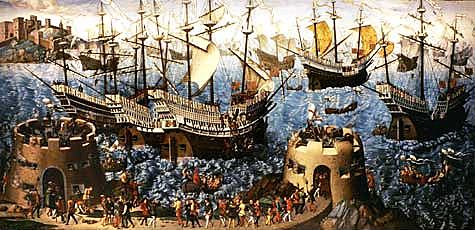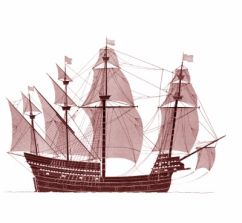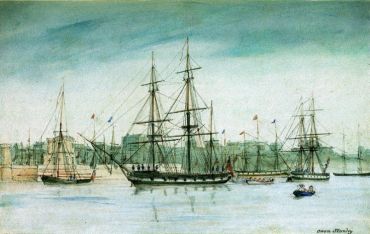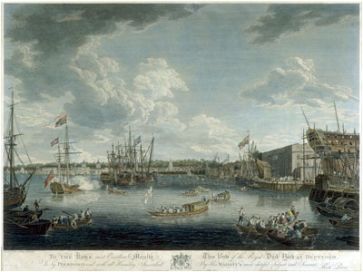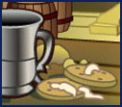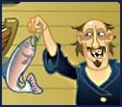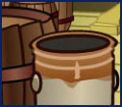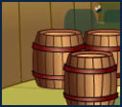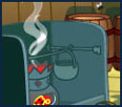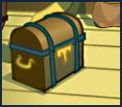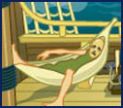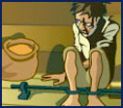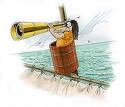King Henry VIII - The Tudor Navy
Jump to navigation
Jump to search
| The Tudor Navy Click EasyEdit to add to this page. (Don't see the EasyEdit button above? Sign in or sign up) See also : FLAGSHIP of Henry VIII's navy - the Mary Rose |
| History of the Tudor Navy |
The English navy grew vastly under three Tudor monarchs: King Henry VII, King Henry VIII, and Elizabeth I. All three fostered English sea-power for both trade and war.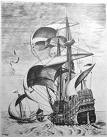 King Henry VII was an overseas trader who built ships and let them out to traders for profit as well as trading with them himself. He also realized that he would need a fighting navy to protect his trading ships. To this end, he built Man-of-War ships, and although these ships were built for fighting, he also used them for trade. Up to this time the navy largely consisted of merchantmen ships. They were well armed, and in time of war they assisted the Royal navy. King Henry VII was an overseas trader who built ships and let them out to traders for profit as well as trading with them himself. He also realized that he would need a fighting navy to protect his trading ships. To this end, he built Man-of-War ships, and although these ships were built for fighting, he also used them for trade. Up to this time the navy largely consisted of merchantmen ships. They were well armed, and in time of war they assisted the Royal navy.The English engaged in overseas trading throughout all of Europe, Asia Minor, and North Africa. Henry VII was even approached by the brother of Christopher Columbus to finance his voyage to discover the New World. With no guarantees and great expense, he refused. After the success Columbus had for Spain, Henry VII, 1497, sent John Cabot to the New World in a small vessel, the Matthew and manned by only 18 men. Although he did land in Cape Breton, the voyage was not considered a success because there were no silks spices, gold or jewels that were anticipated of a landing in the Far East. When King Henry VIII came to the throne in 1509, his first thought was for the " Broade Ditch" which he called the English Channel. He wanted to transport his troops across the Channel and protect his trade routes and he had great concerns about an invasion from France, so he began to expand his Navy to include ships that were strictly for fighting. Throughout his reign Henry never forgot that England's survival depended on it being a mighty sea-power. He therefore made ship building a priority. The Navy was expanded from 8 ships to include 46 warships as well as 13 small galleys. Twenty six ships were purchased fully built, while an additional 13 joined his fleet due to the result of capture. The ships that were strictly meant for warfare could hold an average of 200 sailors, 185 soldiers, and 30 gunners. |
| Types of Ships |
| There were many different types of ships that comprised the Tudor Navy. Some of them dated back to the reign of Henry VII and some designs evolved during the reign of Henry VIII. |
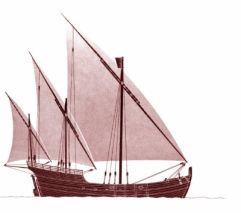 Tudor Caravel 1470 Tudor Caravel 1470The Caravel was a type of fishing vessel that proves to be so successful that it was eventually developed and enlarged. They usually had a small stern castle, with a quarter deck and a poop deck but no forecastle. Typically they were between 80 - 100 tons and were basically used as merchant ships. This type of ship was more or less a specialty of Portugal and Spain. Two of the ships used by Christopher Columbus were Caravels. |
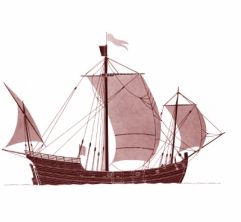 Caravel Redunda 1470 Caravel Redunda 1470 The Caravel Redunda is derived from the Caravel with the only difference being that the Caravel had lateen sails and the Redunda had some square sails. In some cases a Caravel would be re-fitted by moving the masts and re-cutting the sails. |
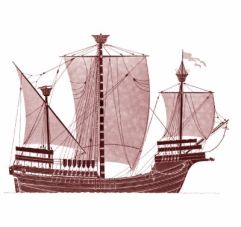 Tudor Carrack 1470 Tudor Carrack 1470 This ship had a high main mast with a huge main sail. The hull was deep and round with a high forecastle and a framework for an awning. The sterncastle was high with a poop deck supported on wooden pillars. A barrel on the side of the ship would be used for storing salted meat. Five small cannons were carries in the sterncastle and there was a small swivel gun in the Mizen top. See also : The Mary Rose, Flagship of Henry VIII's navy |
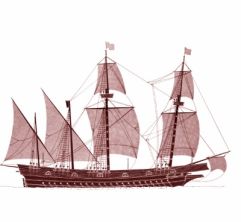 English Galleass "The Bull" 1546 English Galleass "The Bull" 1546Experimental vessels were built during the reign of Henry VIII including several types of oared ships and several small galleasses, one being "The Bull". She was about 180 tons and rigged similar to smaller ships with 4 masts,however with a different hull. It had just one long upper deck with no fore or aftercastles, and room below deck for rowers. It had a galley type ram fitted to the bows and the overhanging deck was used to board the enemy ship once it had been rammed. |
| Other Types of Ships There are several other types of classifications of naval vessels in the Tudor Navy. They include: - Balinger: A small sea going vessel that were usually single masted and flush decked with no forecastle. Note for speed and maneuverability. - Brigantine: A small vessel equipped for both sailing and rowing. They were faster and more easily maneuvered than larger ships and were used for piracy, espionage, and reconnoitring. - Crayer: A small singles masted vessel. Designed for maximum carrying capacity, it was largely used for trade. - Dromond: A large ship of Mediterranean origin, propelled by both sail and oar. It was used for both war and commerce. - Galleon: A medium to large sailing ship with flush decks and no castles. Usually longer and more narrow than carracks with better handling capabilities. Used for both war and trade. - Galley: A light fighting ship chiefly propelled by oars so they were fast and could move independent of the wind. Their downside was that they couldn't carry heavy armaments and were very risky in rough weather. |
| Shipyards |
| During King Henry VII's rule the Royal dockyards were located in Portsmouth, but that was far away from the Armouries in the Tower of London where the ships were fitted with cannons and artillery. So, under Henry VIII two Royal dockyards were constructed on the Thames to build warships. They were built between 1513 and 1514 at Woolwich and Deptford. Both places were close enough to London to obtain arms and a labour force. Woolwich and Deptford were also well located for building materials. Since all ships were made from wood many tree were needed and there were still large forests in parts of Kent. Another reason for choosing these locations is that they were close to Henry's palace at Greenwich. Both sites remained important centers for ship construction until they closed in 1869. |
| Trinity House In 1513 a group of mariners sent King Henry VIII a petition to tell him about the lack of suitably trained sailors to pilot ships on the Thames River. They pointed out that many of the inexperienced pilots were tempted to make money by wrecking their ships. If this practice were to continue there could be some very serious consequences, as it was dangerous to allow ' foreigners, including Scots, Flemings and French, the opportunity to learn the secrets of the King's streams'. On March 19, 1513 Henry accepted the petition and formed what would later become the Trinity House Corporation, located at Deptford. Their title was 'The Master, Wardens and Assistants of the Guild or Fraternitie of the most glorious and blessed Trinitie and Saint Clement in the Parish Church in Deptord Stronde in the County of Kent'. ( Saint Clement is the Patron Saint of mariners) The Corporations headquarters and several almshouses were established at Trinity Hall near St. Nicholas' Church in Deptford. Life( St. Nicholas Church and Trinity almshouses) The Charter allowed the Corporation to collect light dues from ships using it's beacons and buoys on the Thames. Customs officers were responsible to collect the money. |
| Life on Board the Ships |
| Life on board a Tudor ship can only be described as cramped, especially for Tudor explorers who were at sea for months at a time. Headroom below deck was at a premium, as were sleeping quarters. Many crew members would elect to sleep on deck. Listed below are some of the aspects of a sailors life on a Tudor ship. |
